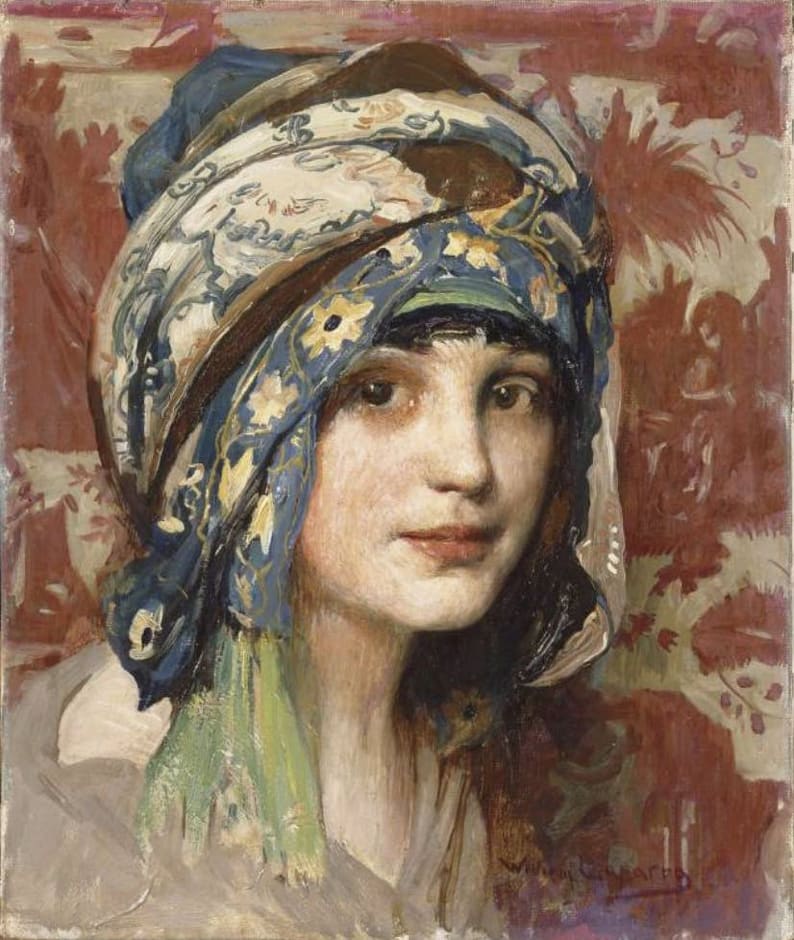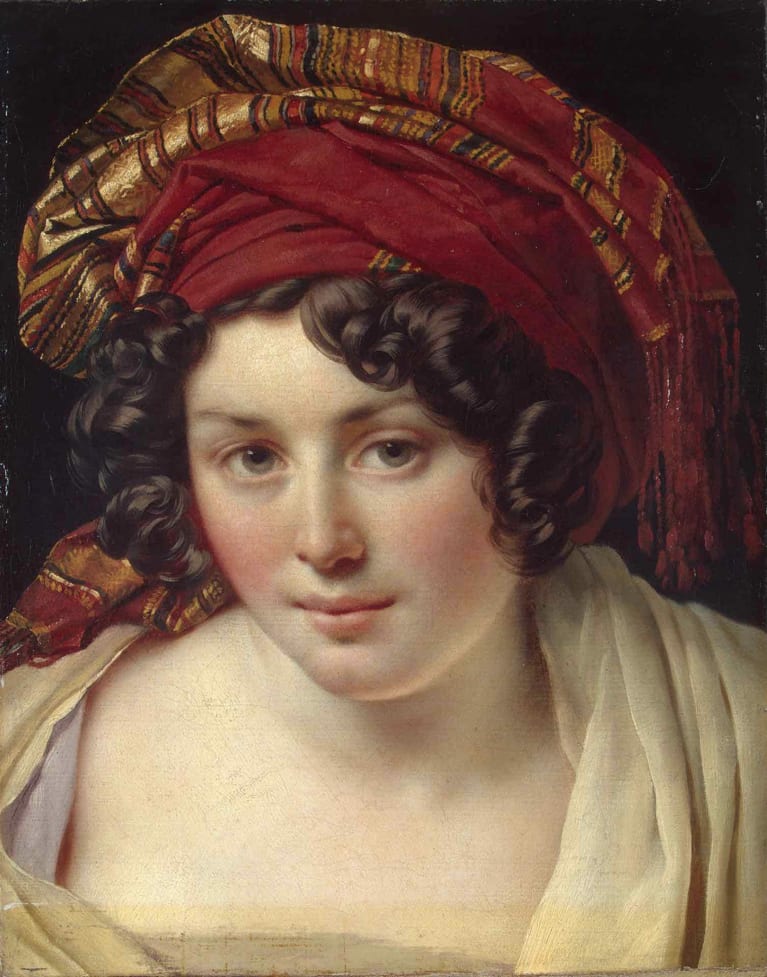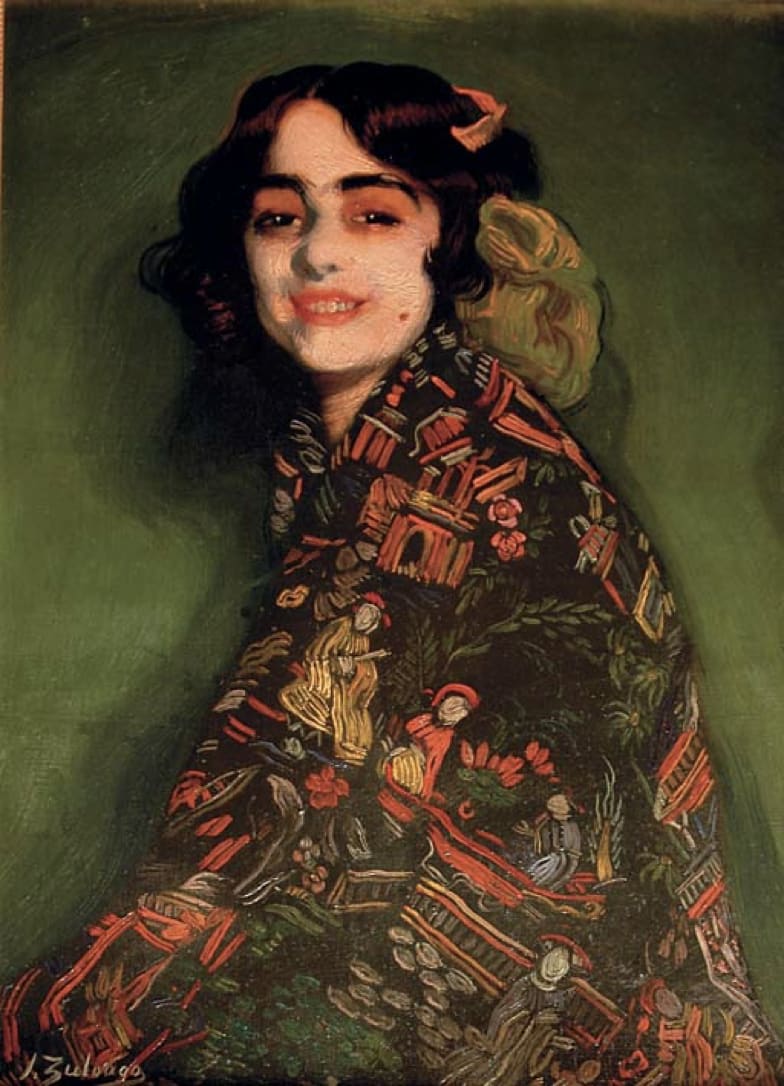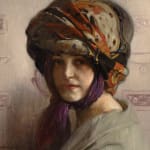William Laparra (1873 - 1920)
Further images
Head of a woman wearing a multi-coloured turban and purple head-scarf
Signed lower left: William Laparra
Oil on canvas, in a Spanish style frame
47 x 39 cm (18 ½ x 15 ½ in.)
Head of a woman wearing a multi-coloured turban and purple head-scarf
Signed lower left: William Laparra
Oil on canvas, in a Spanish style frame
47 x 39 cm (18 ½ x 15 ½ in.)
Exhibition:
Probably Bordeaux, 1922, Rétrospective William Laparra, no. 16 (Tête à turban avec voile violet)
Imbued with a sense of stillness and mystery typical of William Laparra, the present work fits into a small group of paintings depicting bust-length female figures wearing colourful turbans set against Art Nouveau wallpaper backgrounds. Characterised by a vibrant tonality and beautiful passages of fresh, impasto brushwork, the painting counts amongst the finest of this group, comparable in its impact to the example on panel in the Musée d’Orsay (fig. 1) or the beautiful head that was reproduced in 1926 in the weekly paper L’Illustration. The present painting is an outlier amongst this group, however, in that it depicts a young woman, as opposed to the adolescents of the other works.

Fig. 1, William Laparra, Young girl with turban, oil on
canvas, 29 x 24 cm, Musée d’Orsay
These turban-wearing females were clearly much appreciated by Laparra’s contemporaries. Indeed, in the catalogue for an exhibition in Pau in 1915, the museum’s curator Paul Lafond wrote ‘how charming is the young woman in a strange turban, in which one finds the young master’s rare and exquisite qualities of drawing and colour, which make the painting a quite precious work’.[1] They may be party inspired by a trip Laparra made to Egypt in 1898, though more likely the source is French early 19th-century female portraiture, replete with woman wearing turbans, which were very much en vogue at the time thanks to an increasing interest in the East (fig. 2). The 1910s, the decade in which the present work was likely painted, also saw the return of turbans in female fashion. Paul Poiret, a leading designer of the time, known as the ‘Sultan de la mode’, included the turban in his revival of ‘oriental’ styles, declaring ‘I admire unwaveringly the diversity of their so logical and elegant forms’.[2]

Fig. 2, Ann-Louis Girodet, Woman in a turban, oil on
canvas, 41 x 35 cm, Hermitage Museum
Laparra painted these ‘logical and elegant’ forms in a virtuoso manner, using a vivid palette and thick impasto brushstrokes that have much in common with the Spanish painter Ignacio Zuloaga, an almost exact contemporary (fig. 3). Laparra got to know Zuloaga well, and though the Frenchman maintained his own highly distinctive style, he absorbed much of the Spaniard’s technical approach. Of Spanish heritage on his father’s side, Laparra was proud of his Iberian roots, visiting the country many times from 1897 onwards and admiring its arts.

Fig. 5, Ignacio Zuloaga, Candida wearing an oriental shawl,
oil on canvas, 72 x 51 cm, Private Collection
Born in Bordeaux, Laparra moved to Paris in 1892 to study at the Académie Julian, under the tutelage of the prominent painters William Bougeaureau, Tony-Robert Fleury and Jules Léfèbvre. In the same year, aged twenty-two, he won the Prix de Rome, thereby setting himself up for a successful career (his brother, Raoul Laparra, won the Prix de Rome for musical composition in 1903). Laparra travelled widely in Europe, though settled in Paris and became a teacher at the Académie Julian in 1914, dying at the age of forty-seven in northern Spain, and leaving behind a diverse and individual body of work.
[1] William Laparra 1873-1920, exhibition catalogue, Musée des Beaux-Arts de Bordeaux, 1997, p. 67, ‘Combien charmante la Jeune femme au turban si curieusement coiffé, dans laquelle se retoruvent les rares et exquises qualités de dessin et de coleur du jeaune maître, qui font de la toile une oeuvre tout à fait précieuse’.
[2] P. Poiret, King of fashion: the autobiography of Paul Poiret, London 1931, p, 95.





